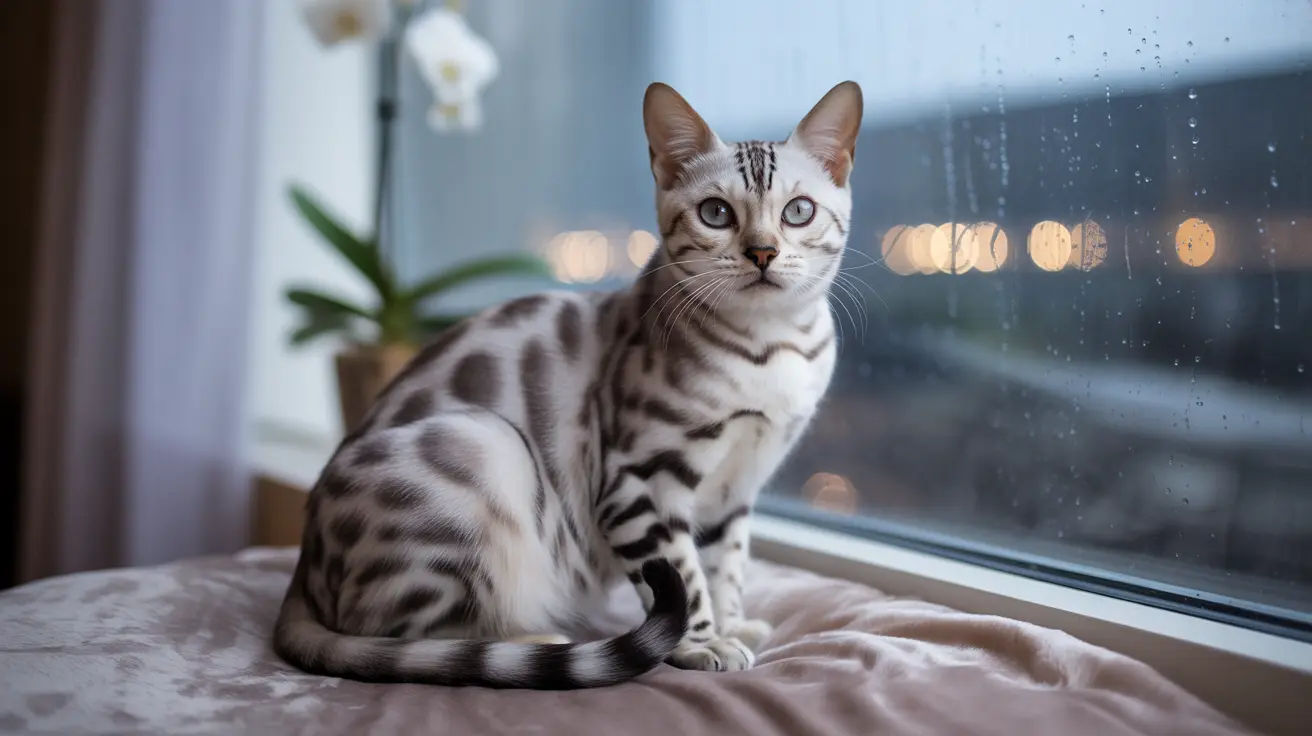Many cat owners wonder if their feline companions can cry from sadness like humans do. While cats are indeed emotional creatures capable of experiencing various feelings, their expression of emotions differs significantly from humans. Let's explore the fascinating world of feline tears, emotions, and how cats truly express their feelings.
Understanding the difference between physical tears and emotional expression in cats is crucial for proper pet care and recognizing when your cat needs attention or medical intervention.
The Truth About Cat Tears
Unlike humans, cats don't produce emotional tears when they're sad or upset. While cats have tear ducts and produce tears, these serve a purely physiological function - keeping their eyes lubricated and healthy. When you notice your cat's eyes watering, it's typically due to a physical rather than emotional cause.
Common reasons for watery eyes in cats include:
- Eye infections or conjunctivitis
- Allergic reactions
- Foreign objects in the eye
- Upper respiratory infections
- Blocked tear ducts
How Cats Express Sadness and Emotion
Though cats don't cry emotional tears, they communicate their feelings through various other methods:
Vocal Communications
- Increased meowing or yowling
- Changes in pitch or tone of vocalizations
- Unusual quietness
- Persistent crying sounds
Behavioral Changes
Cats often express sadness or distress through:
- Withdrawal from social interaction
- Changes in eating habits
- Excessive sleeping
- Reduced grooming
- Hiding in unusual places
- Changes in litter box habits
Understanding Physical vs. Emotional Signs
When evaluating your cat's emotional state, it's essential to distinguish between physical symptoms and emotional indicators. Watery eyes always warrant attention to rule out medical issues, while behavioral changes might signal emotional distress.
Supporting Your Cat's Emotional Well-being
To help a cat experiencing emotional distress:
- Maintain consistent daily routines
- Provide extra attention and gentle interaction
- Create safe spaces for retreat
- Offer environmental enrichment
- Consider pheromone products for anxiety
- Consult a veterinarian if concerns persist
Frequently Asked Questions
Can cats cry tears when they are sad or emotional?
No, cats cannot cry emotional tears. While they have tear ducts and produce tears for eye lubrication, these tears are not connected to their emotional state. Cats express emotions through behavioral changes and vocalizations instead.
Why do my cat's eyes water if cats don't cry emotional tears?
Cat's eyes water due to physical causes such as allergies, infections, irritants, or blocked tear ducts. This tearing is a protective mechanism and should be evaluated by a veterinarian if persistent.
What signs indicate my cat is feeling sad or stressed without crying?
Look for changes in behavior such as reduced appetite, withdrawal, excessive sleeping, changes in grooming habits, hiding, or unusual vocalizations. These are more reliable indicators of emotional distress in cats.
How can I tell if my cat's crying sounds mean they are in pain or lonely?
Different vocalizations often indicate different needs. Sharp or persistent cries might indicate pain, while longer, drawn-out meows typically signal loneliness or attention-seeking behavior. Context and accompanying body language provide important clues.
What should I do if my cat's eyes are tearing persistently or excessively?
Persistent or excessive tearing requires veterinary attention to rule out medical conditions such as infections, allergies, or tear duct problems. Don't assume it's emotional crying, as this could delay necessary medical treatment.
Conclusion
While cats can't cry emotional tears, they are deeply emotional beings who express their feelings through various behaviors and vocalizations. Understanding these signals helps us better care for our feline companions and respond appropriately to their emotional and physical needs.






